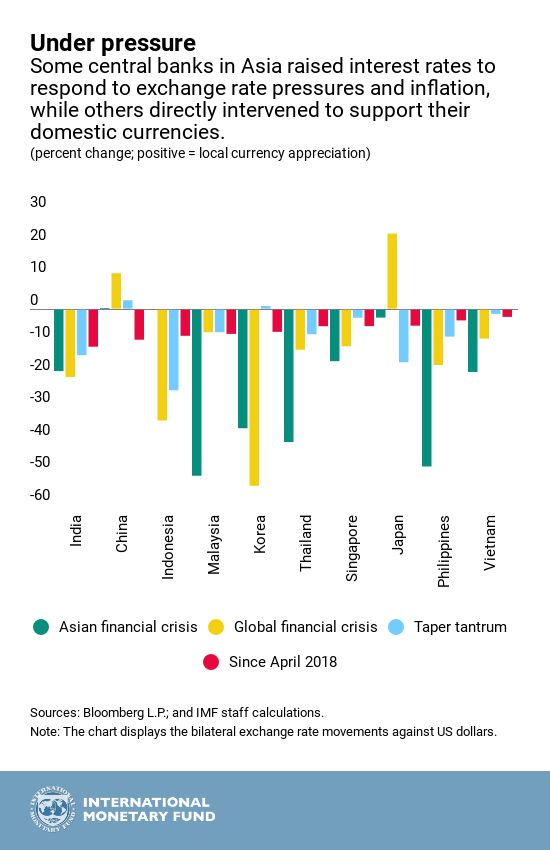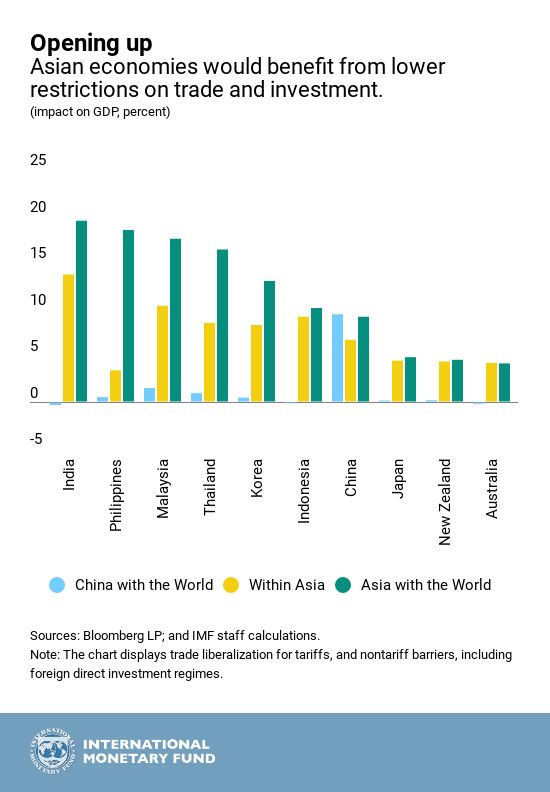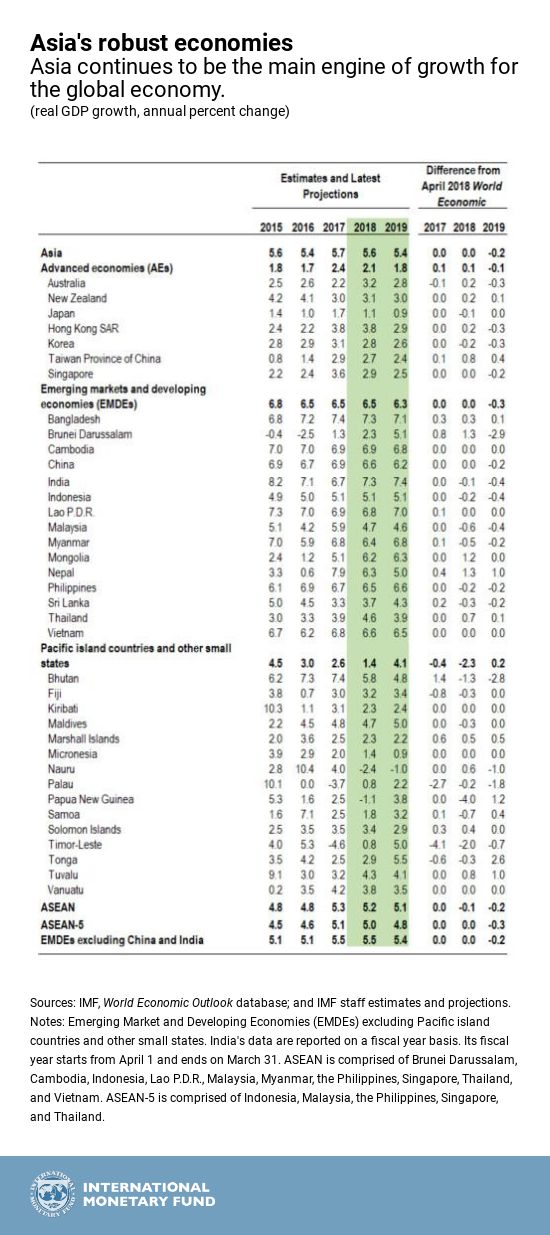The IMF has some smart insight into the future economic realties for Asia. And it’s important for everyone to understand the opportunities and challenges ahead.
The updated Regional Economic Outlook: Asia and Pacific, was recently launched at a press conference in Bali, Indonesia as part of the IMF-World Bank Annual Meetings, also cites longer-term challenges for Asia’s growth prospects, including slowing productivity, population aging, and the impact of the digital revolution on the future of work.
Policies to tackle these challenges should help to strengthen economic resilience, sustain growth, and ensure that its benefits are widespread.
“Asia has achieved tremendous economic progress over the past few decades, with hundreds of millions of people lifted out of poverty and successive waves of economies transitioning to middle-income and even advanced-economy status. No doubt the region faces important challenges, but these can be addressed with smart policy making,” said Changyong Rhee, Director of the IMF’s Asia and Pacific Department.
Dynamic economies
- Projected growth in China remains at 6.6 percent for 2018 and is expected to moderate to 6.2 percent in 2019, with some increase in medium-term risks reflecting a possibly slower pace of deleveraging as the authorities introduce stimulus to offset the impact of trade measures.
- Japan’s growth in 2018 has been marked down from 1.2 to 1.1 percent, reflecting mixed quarterly outturns.
- In India, the economy is projected to grow at 7.3 percent in FY2018/19 and 7.4 percent in FY2019/20, revised down by 0.1 and 0.4 of a percentage point, respectively, on account of higher oil prices and further monetary policy tightening.
- Growth in ASEAN-4 economies (Indonesia, Malaysia, the Philippines, Thailand) lost momentum in the first half of 2018—except in Thailand—and has been revised down for 2019.
- In most of the rest of the region, including small states and Pacific island economies, growth is expected to pick up, reaching 4.1 percent for 2019.
Risks ahead
According to the report, there are downside risks to the forecast in both the near term and the medium term. Continued trade tensions could further undermine business confidence, hurt financial markets, disrupt supply chains, and discourage investment and trade in the region.
If all of these effects materialize and all proposed tariffs are implemented, Asian GDP could fall by 0.9 percent over the next couple of years, according to IMF research. Greater protectionism could also make tradable consumer goods—such as electronics—less affordable.
Further, Asia is vulnerable to tighter global financial conditions, spurred by higher U.S. interest rates, a sudden deterioration of risk appetite, rising trade tensions, and political and policy uncertainty.
Analysis in the latest regional assessment suggests that such tighter financial conditions could lower Asia’s output by as much as three-quarters of a percentage point. Financial market volatility already seen in some emerging market economies could worsen, with negative spillovers to Asia through reduced capital flows and higher funding costs.
Asia’s economies also face domestic risks, including from high household and corporate debt in Korea, Singapore, and many other economies, inflated real estate markets in Australia and Hong Kong SAR, and the risk of slowing reform implementation in India.
Moreover, China’s policies have focused on addressing the economy’s significant and longstanding financial vulnerabilities. But the shift in priority toward stabilizing growth may mean slower progress on deleveraging and heightened medium-term risks for China and the entire region.
Sustaining growth and building prosperity
To strengthen resilience and tackle these growing downside risks, Asian economies will need to adopt policies that support financial stability and sustain growth. Given the region’s vast diversity, policy priorities differ across economies.
For example, the report recommends allowing exchange rates to move flexibly and act as a shock absorber, with foreign exchange intervention used only to deal with disorderly market conditions.
This would support independent monetary policy decision-making to address inflation and domestic objectives, with targeted measures—macroprudential policies—to protect financial stability.
Currently, with low inflation and negative output gaps in most advanced economies in the region, monetary policy should generally remain accommodative. But where inflation is on the rise, or where capital flows remain volatile and balance sheets show significant currency mismatches, raising interest rates would be appropriate.
Looking beyond the near term, Asia would benefit from reforms that address the region’s challenges, as well as ensure sustained and inclusive growth.
For example, the report shows that regional trade and investment liberalization (removing regulatory restrictions) particularly in services, can help to bolster Asia’s prospects and offset the impact of global trade tensions. Indeed, our analysis shows that liberalization could boost Asian GDP by up to 15 percent over the long run.
The report also finds that declining firm dynamism—the decline in young firms, and the rise of so-called zombie firms in financial distress—has played a role in Asia’s declining productivity growth. Measures to boost firm entry and exit can help support economic growth.
Furthermore, the regional assessment highlights the significant impact that digitalization is having on the region. For instance, digital innovations accounted for nearly one-third of Asia’s per capita growth over the past two decades.
To ensure that the region fully harnesses the digital dividend, policy makers will need to upgrade education, infrastructure, and the regulatory environment. At the same time, digital disruptions—such as displaced workers from automation—will need to be addressed, and financial stability risks from fintech must be managed.
These are all serious challenges, but they are surmountable. With continued sound policy making, Asia should have good prospects for staying at the forefront of global growth over the coming decade and beyond.




